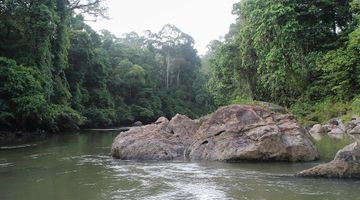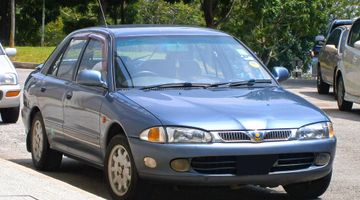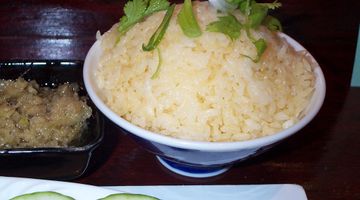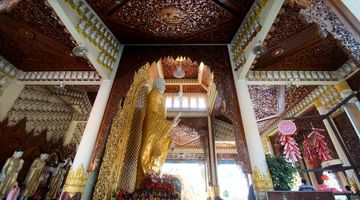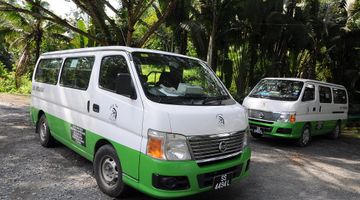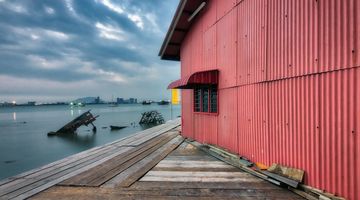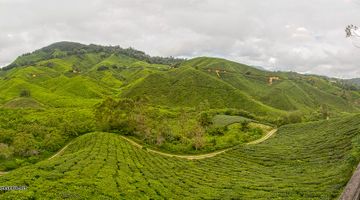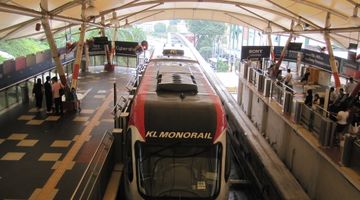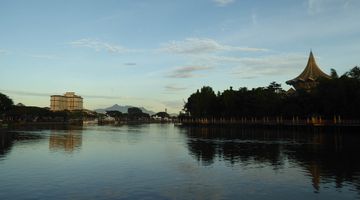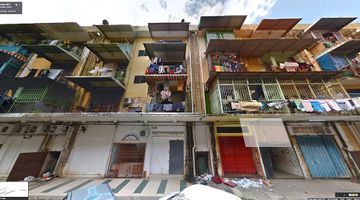Ultimate Malaysia Travel Guide 2024
Add Malaysia to your travel list because it is one of the most amazing countries in Southeast East Asia to visit. It boasts a landscape of cascading tea plantations, fantastic white sand beaches that look no worse than the Maldives, crystal clear water, and, as a bonus, wild tropical forests.
You can find almost everything that makes a vacation great. Tourists often underestimate Malaysia, so don't miss the chance to be among the top tourists visiting beautiful Malaysia.
Why should you visit Malaysia?
Having visited Malaysia several times, we can confidently say this place will never disappoint. The country's combination of breathtaking beaches, bustling cities, and lush rainforests offers something new with every trip.
From sipping tea in the misty Cameron Highlands to exploring Penang's colorful streets and relaxing on Langkawi's white sands, Malaysia always feels like a new adventure. The culinary scene, with an incredible mix of Malay, Chinese, and Indian flavors, keeps me returning for more.
But no matter how long you stay, there's always something new to explore and something nice to experience.
How to get to Malaysia?
By Air
The best way to get to Malaysia is by air. There are three essential airports in Malaysia: Senai International Airport, Kota Kinabalu International Airport, and, of course, Kuala Lumpur International Airport. The flight time depends on where you are flying from.
Malaysia Airlines is an excellent choice for comfortable and affordable long-haul flights. At the same time, budget airlines such as Air Asia and Tiger Fly offer shorter flights at even lower prices, especially connections to or from the mainland to East Malaysia’s Kuching and Kota Kinabalu.
By Rail
Keretapi Tanah Melayu, or KTM, is a Malaysian railway service that offers travel from Singapore and Thailand. Daily trains connect Thailand and Singapore to Malaysia. Keretapi Tanah Melayu (KTM), Malaysia's premier rail service, provides a convenient and scenic way to travel around and beyond.
The KTM network connects Malaysia to neighboring Singapore and Thailand, making crossing borders easy by train. From Singapore, KTM Shuttle Tebrau operates daily flights between The Woodlands and Johor Bahru, ideal for quick cross-border travel.
For longer journeys, the KTM Ekspres Rakyat Timuran runs from Johor Bahru to Tumpat, passing through stunning scenery and rural towns. On the Thai side, Padang Besar Station is the main border crossing, with direct trains to Kuala Lumpur and Penang.
KTM also offers an Electric Train Service (ETS) for faster travel between key cities such as Kuala Lumpur, Ipoh, and Penang, providing a comfortable and efficient way to explore Malaysia by rail.
By Bus
Traveling to Malaysia by bus is easy and budget-friendly, especially from Singapore and Thailand. From Singapore, there are frequent buses from places such as the Golden Mile to cities such as Johor Bahru, Kuala Lumpur, and Malacca via the Woodlands Checkpoint.
In Thailand, buses from Hat Yai connect with large cities in Malaysia, such as Kuala Lumpur and Penang. Borneo buses connect Brunei with Malaysian cities, such as Miri and Kota Kinabalu. Be sure to familiarize yourself with visa requirements and border procedures to ensure a smooth trip.
What is the best time to go to Malaysia?
Thanks to Malaysia’s equatorial location, the country’s climate is best described as ‘tropical,’ with hot and humid weather throughout the year. Its two seasons, dry and wet, are dictated by the southwest and northwest monsoons (as well as typhoons, but don’t let them put you off; it’s so worth it.
Plus, the rain is warm anyway! The best time to visit Malaysia is from November to August. The temperature does not change much throughout the year, but this is the period when you will avoid the monsoons.
Nevertheless, if you want to visit Malaysia's stunning islands, plan your trip with the seasons in mind. Some ferries and speed boats might not be running, and if you plan on diving, the water's visibility might not be as good. The great thing about all this rainfall is that no matter when you visit, the jungles will always be dense and lush, and those tea plantations are thriving! Just make sure you bring a good waterproof jacket for your hikes.
How do you get around Malaysia?
Flights within Malaysia are affordable, so if you're on a tight budget, this will be a bargain.
🚍 Buses. Malaysia has an extensive bus network with affordable prices, connecting major cities and smaller towns. Buses are an excellent option for budget travelers, and companies like Aeroline and Konsortium offer comfortable long-distance routes.
🚉 Trains. The KTM rail service provides a scenic way to travel across the country, especially on routes like Kuala Lumpur to Penang or Johor Bahru. Although slower than buses, it’s a comfortable and relaxing experience.
🚕 Taxis. You can quickly get around cities like Kuala Lumpur, Penang, and Johor Bahru. Taxis are available, but ensure the meter is used to avoid overcharging.
🚇 Public Transportation. Significant cities like Kuala Lumpur have efficient public transport, including MRT, LRT, and monorail services, which are perfect for getting around quickly and cheaply.
Where to go in Malaysia?
While planning your trip to Malaysia, three not-to-miss destinations we recommend you visit to make the most of the country’s incredible landscape of beach and jungle, wildlife, and sea life are Kuala Lumpur, the cosmopolitan capital; Borneo, home to the wildest jungles; and the paradise islands of Langkawi and Perhentian.
Kuala Lumpur
Kuala Lumpur has become one of the big hubs for international flights so getting into Malaysia shouldn’t be a problem. You’ll find hundreds of flights flying into this metropolitan capital daily whether you’re flying in from further West, or from elsewhere in Asia. Malaysia’s own Malaysia Airlines is a great choice for comfortable and affordable long-haul flights while budget airlines such as Air Asia and Tiger fly the shorter flights at even cheaper, especially connections to/from the mainland to East Malaysia’s Kuching and Kota Kinabalu.
Where to go from Kuala Lumpur?
Kuala Lumpur → Singapore To travel from Kuala Lumpur to Singapore, you can fly (1 hour), take a bus (5-7 hours) or take a train (KL to Johor Bahru, then transfer to Singapore). The road on the expressway takes 4-5 hours. Private transfers are also an option, albeit more expensive.
Kuala Lumpur → Penang To travel from Kuala Lumpur to Penang, you can take a quick 1-hour flight, a 4-5 hour train ride from KL Sentral to Butterworth (plus a ferry to Georgetown), or a 5-6 hour bus from TBS to Sungai Nibong. The trip on the North-South expressway takes 4-5 hours, and private transfers are also available for greater comfort.
Kuala Lumpur → Malacca To get from Kuala Lumpur to Malacca, take a 2-3 hour bus from TBS to Melaka Sentral, drive 1.5-2 hours via the North-South Expressway, or book a private transfer for convenience.
Kuala Lumpur → Cameron Highlands
You can take a 3-4 hour bus from TBS, drive 3-4 hours via the North-South Expressway, or book a private transfer for more comfort.
Kuala Lumpur → Bangkok To travel from Kuala Lumpur to Bangkok, you can take a 2-hour direct flight, a 20-24-hour trip from KL Sentral to Bangkok or a bus that takes around 24 hours. You can order a private transfer or a sleeper train for more comfort.
Kuala Lumpur → Ipoh To get from Kuala Lumpur to Ipoh, take a 2-hour ETS train from KL Sentral, a 2-3 hour bus from TBS, or a 2-hour North-South Expressway. For added comfort, private transfers are also available.
Kuala Lumpur → Johor Bahru Here you can take a 4-5 hour bus from TBS, a 4-5 hour drive via the North-South Expressway, or a 4-5 hour ETS train to Gemas, then transfer to another train to Johor Bahru. Private transfers are also available.
Penang
Penang's streets are packed with lively shops and unique street art. The local food, like char kway teow and laksa, will make your trip worthwhile. Georgetown’s mix of colonial buildings, Chinese temples, and busy markets highlights its cultural diversity.
For a beach escape, head to Batu Ferringhi or enjoy the cool breeze and views on Penang Hill. Don’t miss Kek Lok Si, a serene Buddhist temple. Penang always offers something memorable, no matter when you visit.
Where to go from Penang?
Penang → Kuala Lumpur
Penang → Langkawi
Penang → Ipoh
Penang → Singapore
Malacca
Malacca has a mix of Portuguese, Dutch, and British influences that create a non-ordinary city. The old town's narrow streets are filled with red brick buildings, bright murals, and quaint little shops, perfect for a lazy stroll where you just let your curiosity guide you. The city's promenade is lively and decorated with bright lights and music, creating a fun carnival atmosphere.
Climb St. Paul's Hill for stunning views, or get lost in the weekend market on Yonker Street, a total of local eats, vintage finds, and antiques. Malacca's culinary scene is a beautiful mix of Nyonya, Portuguese, and Malay cuisines, so don't miss out on dishes like chicken rice balls or cendol on a hot day. The city may be small, but its charm is immense, and every corner tells a story - one of those places where you can feel the past while enjoying the present.
Where to go from Malacca?
Malacca → Kuala Lumpur
Malacca → Singapore
Malacca → KLIA II
Malacca → TBS Kuala Lumpur
Langkawi
Langkawi is the calm atmosphere of the island. The turquoise water and lush tropical forests are a corner of paradise in Malaysia. This archipelago of 99 islands is known for its stunning beaches, such as Pantai Cenang, where you can relax with your toes in the sand or indulge in water sports if you're feeling adventurous. The views from the Sky Bridge are unparalleled; take the cable car up, and you'll be rewarded with stunning panoramas of the island and the Andaman Sea, especially on a clear day.
Besides the beaches, Langkawi is full of surprises: explore the mangroves on a boat tour, observe the wildlife, or cool off at the Seven Wells Waterfall. Another bonus here is the duty-free shopping because everything from chocolates to perfumes looks like a steal. Fresh seafood is a must when it's time to eat; the night markets are great for sampling local flavors like satay and grilled fish. Langkawi's laid-back charm and natural beauty make it the perfect place to relax, explore, and enjoy the tropics.
Where to go from Langkawi?
Langkawi → Koh Lipe
Langkawi → Penang
Langkawi → Kuala Lumpur
Langkawi → Phuket
Johor
Johor is where urban energy meets natural possibilities, making it the perfect destination for urban thrills and outdoor adventures. Johor Bahru's state capital has become a bustling hub with modern shopping malls, trendy cafes, and the impressive Sultan Abu Bakar Mosque overlooking the Straits of Johor. You'll find a mix of traditional and new, with bustling night markets and elegant promenades perfect for evening strolls.
A short drive from the city, you can escape to nature on the Desaru coast, which has pristine beaches and numerous water sports. For something more wild, head to Endau-Rompin National Park for jungle treks and waterfalls. Families will love LEGOLAND Malaysia, which is filled with rides, water parks, and endless entertainment for kids. Johor's culinary scene is a delightful mix of Malay, Chinese, and Indian flavors - don't leave without trying the local laksa or kuey teow. With a blend of urban entertainment and natural beauty, Johor has something for everyone.
Where to go from Johor?
Johor → Kuala Lumpur
Johor → Singapore
Johor → Penang
Johor → Malacca
Ipoh
Ipoh is Malaysia's hidden gem, a city that combines old-world charm with a hip, artsy vibe. Stroll through the historic Old Town, and you'll be greeted by stunning colonial architecture, fantastic street art, and vintage coffee shops serving irresistible white coffee and egg tarts. Ipoh's historic buildings, such as the famous train station and the Birch Memorial Clock Tower, tell stories of its tin-mining past, making you feel like you're stepping back in time.
But Ipoh is more than just history - it is surrounded by incredible nature. The stunning limestone hills are home to cave temples like Kek Lok Tong and Perak Tong, where you can explore hidden shrines and enjoy panoramic views from above. The Lost World of Tambun is a favorite for the whole family, with hot springs, a water park, and even petting zoos. When it comes to food, Ipoh is a foodie's paradise; chicken rice, curry noodles, and the famous Ipo Bean Sprout Chicken are must-tries. Combining nostalgia, nature, and great food, Ipoh is a city that surprises and delights at every turn.
Where to go from Ipoh?
Ipoh → Singapore
Ipoh → Cameron Highlands
Ipoh → Kuala Lumpur
Ipoh → Penang
Malaysian Borneo
From concrete jungle to tropical jungle, just a short flight from KL will take you to Kuching or Kota Kinabalu, to explore Malaysian Borneo: home to some of the oldest rainforests in the world, dating back 140 million years. Here you will find amazing wildlife from endangered orangutans, Sumatran rhinos, elephants, monitor lizards, pythons, tarantulas… you name it!
One of the best things to do is a multi-day jungle tour with a guide and explore the wonderful wildlife and nature for yourself.
Tropical islands of Malaysia
If it’s beach time you’re after, Malaysia isn’t short of a tropical island or two. Make a beeline for Langkawi, Malaysia’s original postcard paradise, an archipelago off the mainland’s west coast, where people have been coming to enjoy its stunning white beaches and turquoise seas for years.
But if you’re after something a little less traveled, the Perhentian Islands are a great alternative on the East Coast of the mainland, and if you time your trip right, you might even be able to see turtles hatching on Turtle Beach.
What to do in Malaysia?
What stands Malaysia apart from some of its neighboring Southeast Asian countries is the incredible number of things to do and activities you can get involved with to experience the diverse landscape, wildlife, and sea life.
Diving
Malaysia is ‘one to watch’ in the diving scene, with stunning reefs and corals for those who love to explore the underwater world. Some of the best dive sites are found off the east coast of Borneo, in Sipidan, where the National Marine Park and its conservation efforts protect the dramatic sea shelves home to exotic fish, sharks, turtles, and rays. You must book ahead for a dive pass, as they are sold daily and limited to avoid too much environmental impact. Extend your diving for a few more days to visit the neighboring dive sites of Mabul and Kapalai Islands, too.
Hiking and mountaineering
Malaysia has some incredible mountains whose peaks and pinnacles are just calling out to be climbed. Mount Kinabalu is Malaysia’s tallest mountain, standing at 4095.2m (13,435ft). Join a 2D/1N guided climb and stay overnight up the mountain before waking up to conquer the peak for sunrise. It’s hard work (we can’t lie!) but once you reach the summit, you’ll feel on top of the world and you’ll get to witness an incredible sunrise.
Another climbing adventure on Borneo is at Mulu National Park whose guided tours will take you around the national park, its incredible cave systems, jungle walks, and a climb up the pinnacles: incredible jagged limestone daggers. Did you know the pinnacles are designed onto the MYR100 note?
Jungle trekking & wildlife
Something to be aware of on your visit to Malaysia is the rise of (and speed of) deforestation for ruthless palm oil plantations – this is a huge problem not only for the rainforests but for the wildlife, too. We urge you to visit the lush green jungles while you can, there’s so much to experience and learn from just make sure you are supporting sustainable and ethical companies when booking your tours.
Some of our favourite jungle trips are to Danum Valley, an important research centre where you can stay on site with the team, and join in jungle walks, talks, and night safaris. For a swampier experience, Kinabatangan river jungle can also be explored by boat and you’ll get to stay in a floating camp on stilts – right in the thick of it!
Colonial heritage
For Malaysia’s history and heritage, many visit Cameron Highlands for a more subdued hiking adventure, but also to learn about the country’s history at the tea plantations. Not only does this experience offer stunning views, but an insight into the British Colonies.
Georgetown and Melaka are two other cities you should put on your agenda if you want to learn more about Malaysia’s rich past through fascinating architecture, museums, and temples.
Where to stay in Malaysia?
On the islands, such as Langkawi and the Perhentians, you can find stunning beachside bungalows and upmarket resorts with endless views of turquoise sea and pure white sand outside your door. You can expect rooms to start at around MYR 90 and up here. You certainly won’t struggle to find luxury in Malaysian paradise.
However, accommodation in the national parks and jungles is less luxurious, with minimal creature comforts, and shared open-plan dorms and basic accommodation are more readily available. But remember, you’re there for the experience, not the lodging, so you might find some bucket showers and mosquito nets to contend with.
For those strapped for cash, hostels offer shared dorms for around MYR 25-50 and private rooms from MYR 60. Mid-range options with hotels and guesthouses provide ample, comfortable en suite rooms for around MYR 75, usually including breakfast and air conditioning. Remember, larger cities, such as Kuala Lumpur, will always be at the higher end of the scale, regardless of your cash flow.
The Perfect Malaysia Itinerary
Day 1-2. Kuala Lumpur
Explore the city's attractions, including Petronas Towers, Batu Caves, and lively areas like Bukit Bintang and Chinatown for shopping and street food.
Day 3-4. Malacca
Head to Malacca for a day of history - visit Yonkers Street, A Famosa, and enjoy a river cruise. Don't miss the local food.
Day 5. Penang
Fly or take a bus to Penang. Discover Georgetown's street art, colonial buildings, and Kek Lok Si Temple. Relax at Batu Ferringhi Beach and enjoy Penang's famous street food.
Day 6-7. Langkawi
Take off in Langkawi for beautiful beaches, a Sky Bridge, and mangrove tours. Before your departure, enjoy duty-free shopping and fresh seafood.
What to eat in Malaysia?
Another great thing about Malaysia is its food. Lovers of spices, rice, eggs, chicken, and fresh fish will stay hungry here! Malaysian cuisine has been inspired by its multi-cultural heritage, so you’ll find Chinese rice dishes, Indian curries, and Malay flavors mixed to create tantalizing dishes.
One of the best ways to experience this culture is by trying street food. For instance, you’ll often see women bent over steaming woks, stirring fresh vegetables and noodles into a mee goreng (a popular fried yellow noodle dish), and charging you just MYR5.
Nasi lemak, a Malaysian ‘signature’ dish, is another popular hearty meal. It consists of anchovies fried in shrimp paste, sambal chili sauce, peanuts, a hardboiled egg, fried chicken, and coconut milk rice. If you’re looking to eat on the run, grilled batu maung satay (meat skewers) are everywhere, and they’re delicious—not to mention ridiculously cheap.
FAQ
-
Is Malaysia expensive?
Malaysia is affordable, with reasonably priced accommodation, food, and transportation, especially outside tourist hubs. Costs can rise in luxury spots, but it offers excellent value for various budgets. -
What is Malaysia famous for?
Malaysia is famous for its stunning natural landscapes, beautiful beaches and rainforests, and iconic landmarks such as the Petronas Twin Towers. It is also known for its diverse culture and delicious food that combines Malay, Chinese, and Indian influences. -
Do you need to be vaccinated to travel to Malaysia?
Vaccination requirements for travel to Malaysia depend on your country of origin and health status. Although the COVID-19 vaccination is generally recommended, it is not mandatory. Travelers should check for any updated requirements or advice before traveling.














